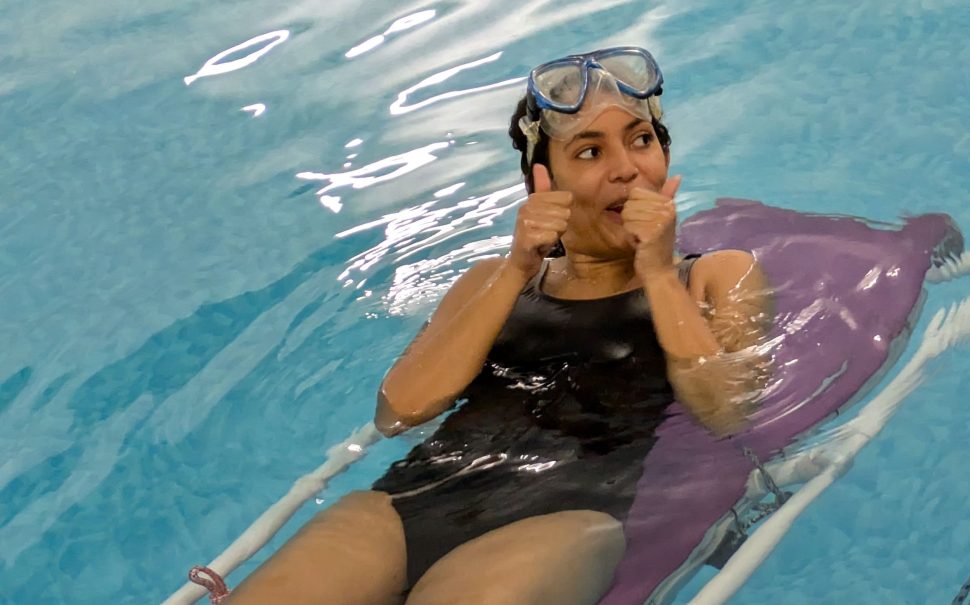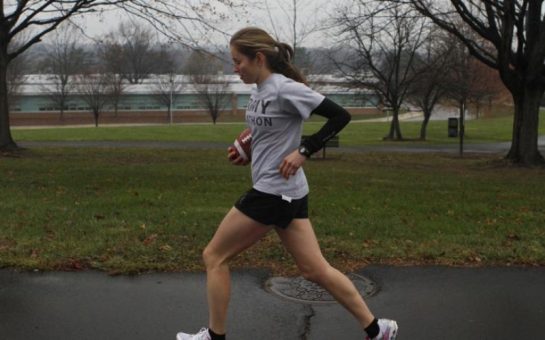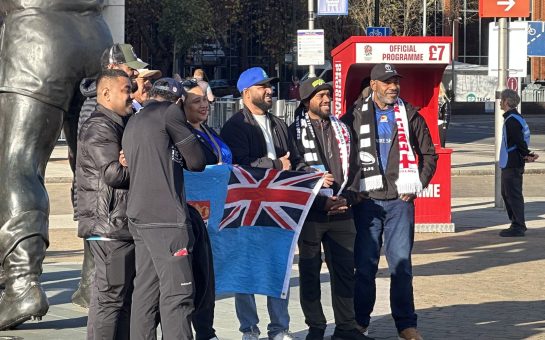A collaborative study aims to encourage black, Asian, and Caribbean communities to ‘find their float’ by myth busting the idea that these populations can not swim due to their bone density.
The study brings together researchers from the University of Portsmouth with the Royal National Lifeboat Institution (RNLI) and the Black Swimming Association (BSA) to improve water safety for these demographics.
For the black community, the bone density narrative is one of many barriers for a population where almost 50% told the BSA that they do not know how to stay safe in the water and 44% expressed fear of the water.
Nicolette Dehi, 32, a recruiter who participated in the study, said: “There’s that stereotype that black people can’t really swim. It kind of made me just a bit wary of the water.
“So then you’re thinking, ‘Oh, okay, maybe this is something I should fear, or maybe this is something that I shouldn’t be doing’.”
The bone density myth speculates that due to having heavier bones, black, Asian, and Caribbean individuals are more likely to sink and therefore drown.
However, the study, which is currently in its final stages, already shows that this myth is false.
Dr. Heather Massey, 45, a senior lecturer with the Extreme Environments Laboratory at the University of Portsmouth, who led the research team said: “The current update is definitely that the myth is wrong.
“We’ve definitely got data to prove that bone mineral density is not a cause of people not being able to float and actually it’s more about having a little bit of body fat.”
“Having the right technique and the right sort of level of relaxation in order to create that technique, that’s going to be the most important factor.”
The study emphasised the need to find the best position to float based on your individual body, something they refer to as ‘finding your float’.
The research involved 96 participants aged 19 to 60 and ranging in swimming confidence and ability from an Olympic swimmer to people who had no swim experience.
To test the myth, Massey and her team took body measurements, followed by a pool session where they tested buoyancy and taught participants how to float.
During the pool session, which took place at two pools in London, they examined the participants’ ability to float unassisted in two metres of water for two minutes.
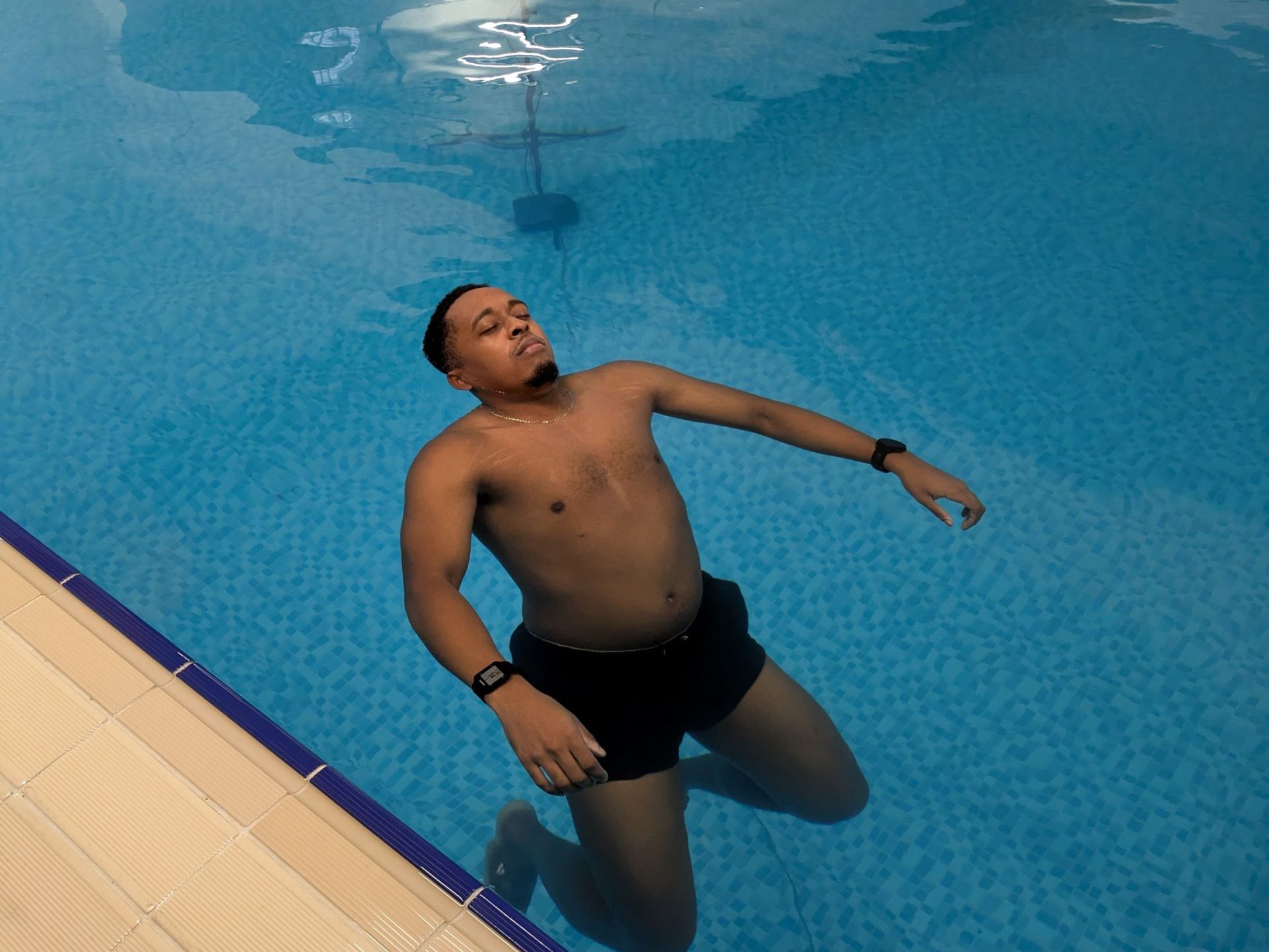
While the traditional floating method is to keep your body up while you spread your arms and legs out to make a starfish shape as Seren Jones, 30, one of the co-founders of the BSA and a participant in the study, explains, floating is not a one size fits all model.
She said: “Floating means making sure your nose and your mouth are above the surface so you can breathe, and it means using as little energy as possible to stay afloat.
“So that is completely up to you, it is a free-for-all, we don’t have to do the starfish thing.
“We’re kind of redefining what it means to float, what it looks like to float, and teaching people that everybody floats differently based on your body composition and your build.”
Both Jones and Massey also emphasised the role of relaxation when floating.
Relaxation, as Massey defined, is being able to let the water support you, rather than fight against it, while you stay afloat at the water’s surface, ideally using the minimum amount of movement.
This allows you to trap more water in your clothing, making you more buoyant.
However, what you often see when people fall into bodies of water unexpectedly is they panic.
Jones said: “It’s that panic that leads to their death.
“Swimming and drowning, it really doesn’t discriminate. You can be a confident swimmer and still not know what to do when you are in an emergency.”
By training participants how to float, the study group hopes to build confidence and avoid death by accidental drowning.
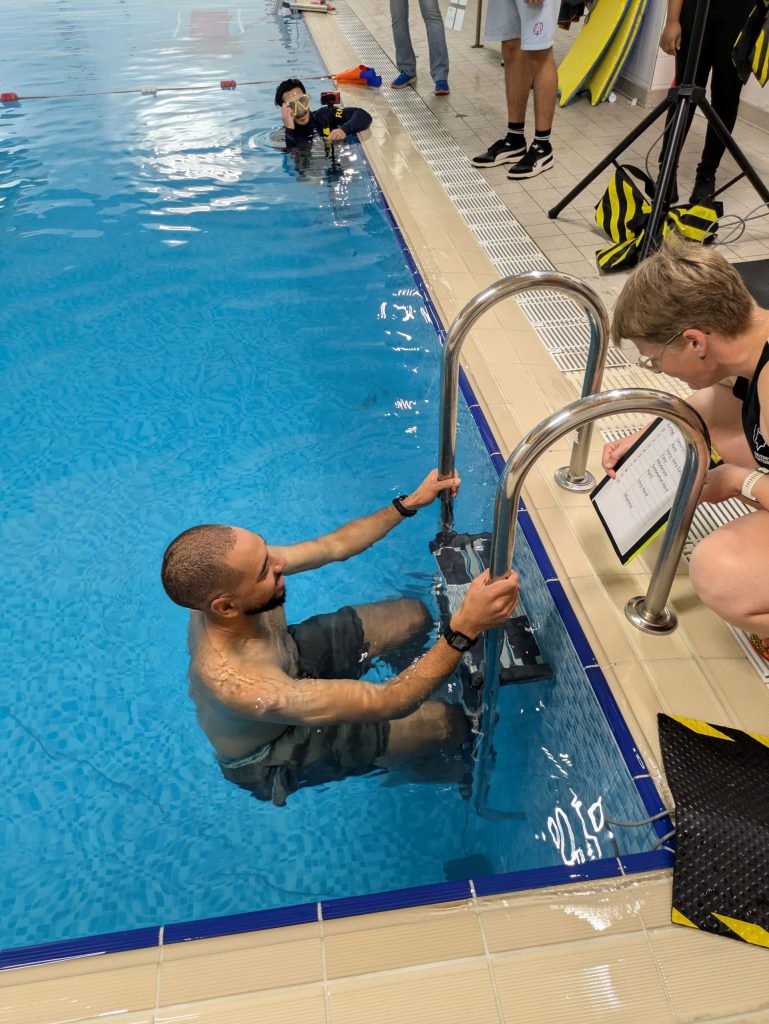
In the UK, there are approximately 400 accidental drownings yearly.
Among this group, the majority are boys and young men aged 15-19 and over 30, of which black men make up a significant part of the demographic.
Furthermore, children with African, Caribbean, and Asian heritage in England are 3.5 times more likely to drown compared to their White and White British counterparts according to data from the National Child Mortality Database.
This number is compounded by the fact that in the England and Wales 21% of the African, Asian, and Caribbean population lives within a kilometre of a waterway.
For Gareth Morrison, 45, Head of Water Safety at RNLI, this study is important because it combines academic research with real world applications.
He said: “From lab to life saving, it’s exactly what we want to do.
“When you’re sat in the room with a parent or brother or sister of somebody who has drowned, you can see the impact it has on their life.
“For the rest of their life, it’s very hard not to take a little bit of that away in your own heart as well, and I think that becomes that extra focus and opportunity to say we need to do more in this space.”
The next steps in the project are to spread the message that this myth is false.
Massey said: “Definitely we need to get this message out there, it’s super important that we try to dispel this myth. “
Jones added: “This is a physiological piece of research all to do with our bodies, but the impact is going to be in our minds.”
This affect could be seen with participant Dehi, who left the study feeling empowered after previously expressing her hesitation swimming in deep water, despite knowing how to swim.
She said: “I felt like a little kid on Christmas, and I kind of wanted to go again, I just felt really accomplished.
“Because when I was floating, I wouldn’t say I fell asleep, that I wouldn’t go that far, but I was in such a relaxed place. I felt like I was on a cloud, and I had never, ever felt that sort of peace in the water before.”
“I found that everyone has their own way of floating, it’s just trying to find what works for me and my body and how I can float.”
Feature Image: An image of a participant during the pool session of the study. Photo Credit: BSA Media Team
